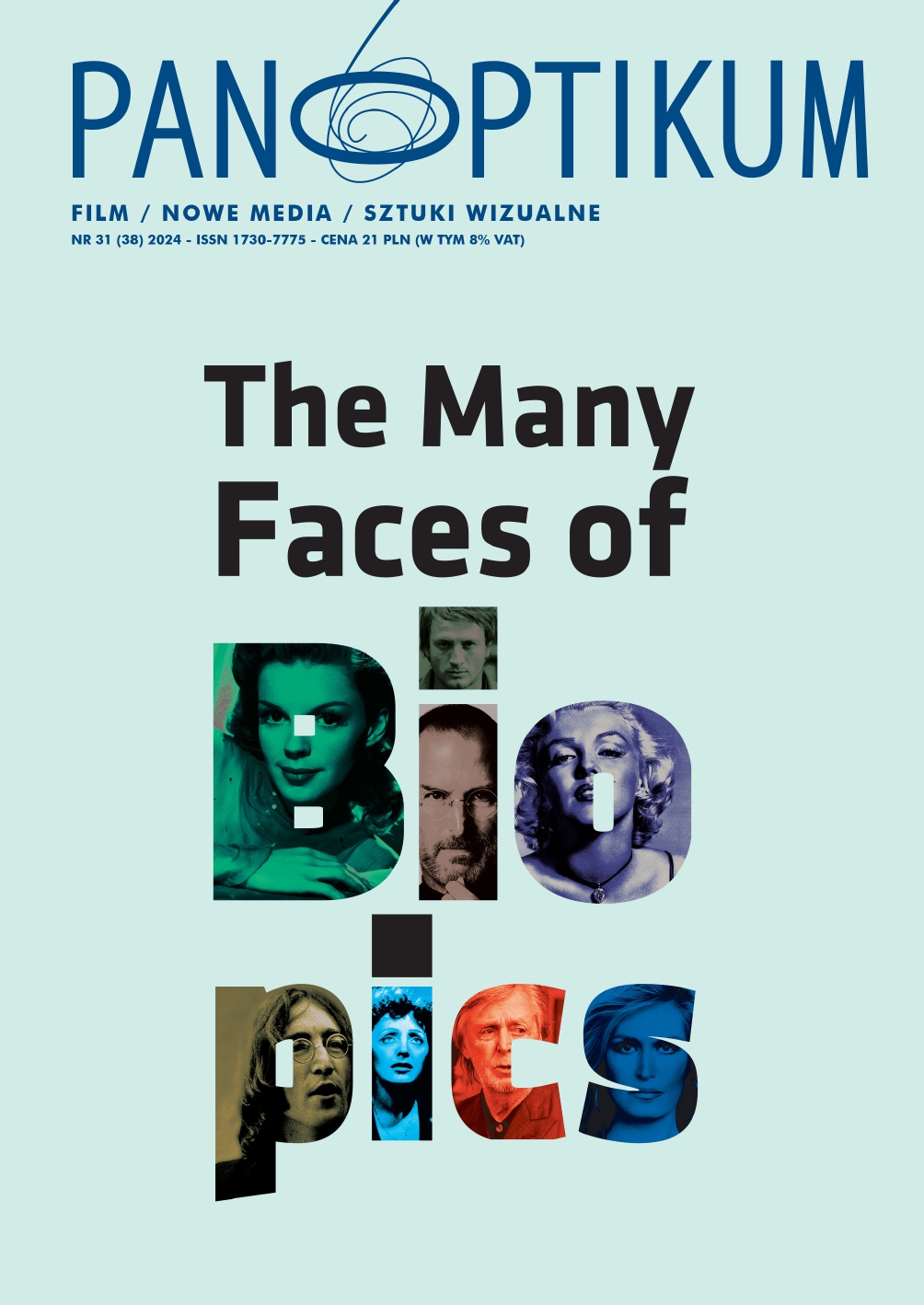Steve Jobs (2015): Art, The Man, The Machine
DOI:
https://doi.org/10.26881/pan.2024.31.05Słowa kluczowe:
Steve Jobs, Aaron Sorkin, Apple, biopic, performance, screenplayAbstrakt
The second film in what one might call Aaron Sorkin’s ‘Asshole Diptych’ (following 2010’s The Social Network) Steve Jobs engages with Apple’s controversial founder: a man whose legacy, as Sorkin’s screenplay voices, had more to do with building beautiful machines than being a beautiful person. This article argues that Sorkin’s innovative biopic approaches its complex subject (both Jobs, and Silicon Valley) via the artifice and intricacy of its own screenplay form: the portrait of an imperfect man, as a perfect cinematic machine. Departing from classical biopic’s focus on the narrative of a ‘life’, Steve Jobs’ three-part structure - focusing on three public product releases - aligns with the structural expectations of the classical screenplay, as well as acknowledging its theatrical setting and influence: the idea of Jobs as a performance. In the script’s various progressions and parallelisms, this article shows, Steve Jobs offers a self-consciously aesthetic rendition of a life seemingly ‘fixed’. Recognising that art is more perfect than its subject, Sorkin’s film encapsulates and potentially obviates the contradictions at play in Jobs - not unlike the ‘beautiful products’ for which Jobs is himself recognised.
Downloads
Bibliografia
Altman, R. (1999). Film/Genre. London: British Film Institute.
Archer, N. (2022). The Social Network: Youth Film 2.0. Abingdon: Routledge.
Bayman, L. (2019.) Performance Anxiety: The Competitive Self and Hollywood’s Post Crash Films of Cruelty. New Review of Film and Television Studies, 17:3, 278-297.
Bordwell, D. (2006). The Way Hollywood Tells It. Berkeley, Los Angeles and London: University of California Press.
Bordwell, D. / Staiger, J. / Thompson, K. (1985). The Classical Hollywood Cinema: Film Style & Mode of Production to 1960. London: Routledge and Kegan Paul.
Catmull, E. (2013). Creativity, Inc. London: Bantam Press.
Custen, G. (1992). Bio/pics: How Hollywood Constructed Public History. New Brunswick: Rutgers University Press.
Field, S. (2005). Screenplay: The Foundations of Screenwriting, revised ed. New York: Random House.
Kahney, L. (2013). Jony Ive: The Genius Behind Apple’s Greatest Products. London: Penguin.
Kallas, C. (2010). Creative Screenwriting: Understanding Emotional Structure. London: Bloomsbury.
Keegan, R. (2015). ‘Steve Jobs’ gets as much attention for Aaron Sorkin as for Steve Jobs. Los Angeles Times, 7 October. https://www.latimes.com/entertainment/movies/la-et-mn- aaron-sorkin-steve-jobs-20151008-story.html.
Isaacson, W. (2011). Steve Jobs. New York: Simon & Schuster.
McGuigan, J. (2009). Cool Capitalism. London: Pluto Press.
Potolsky, M. (2006). Mimesis. Abingdon: Routledge.
Thompson, K. (1999). Storytelling in the New Hollywood. Cambridge and London: Harvard University Press.
Yorke, J. (2013). Into the Woods: How Stories Work and Why We Tell Them. London: Penguin.

 Uniwersyteckie Czasopisma Naukowe
Uniwersyteckie Czasopisma Naukowe









